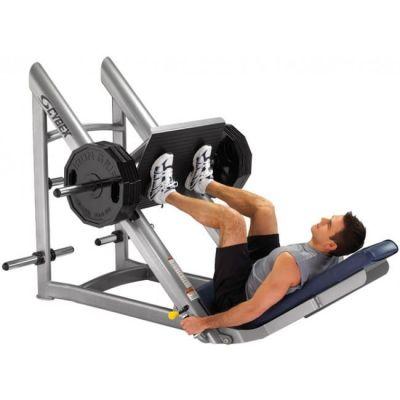By the healthiergang writer , personal trainer.
Gym press
As we know, the lower limbs are composed of a large number of muscles; in other articles we have talked about the main muscles that make up the lower area of our body.
Being composed of numerous muscles there are consequently numerous exercises to develop this area; in other articles we have talked about basic exercises such as squats and their variants, deadlifts, lunges.
Today we are talking about another machine, excellent for the development of the lower limbs: the press.
Categories
There are many types of presses:
- horizontal press
- press at 45 °
- vertical press
- free load
- fixed load
Surely the most found in all gyms is the horizontal press or leg press.
Like other exercises, the press simulates the movement of the squat performed with the free body, but has some small differences; let's analyze in detail how to use this machine.
1. How is it used?
For a correct execution, position yourself on the appropriate seat, with your back well adherent to the backrest, legs on the platform with width equal to that of the shoulders. It is important that the legs are parallel to the ground.
Having assumed the correct position, slowly bend the legs up to the maximum point allowed, that is until the quadriceps come to touch the torso; return to the starting position slowly and fully controlling the movements.

This exercise allows you to work the quadriceps muscle to the maximum, obviously in a secondary way all the other muscles of the lower limbs also work.
variants
The advantage of using the press lies in the fact that by varying the position of the feet you can also vary the muscular work or, by placing the feet higher on the platform (i.e. keeping only the heels as a support area) you will have a greater work of the buttocks. , hamstring and all the muscles of the posterior thigh; if, on the other hand, the feet are wider than the shoulders, we will particularly stress the adductor muscles.
Variations to the classic exercise are:
- leg press gambe alte;
- leg press legs apart;
- single leg leg press;
- Single leg leg press positioned on the side.
It is also possible to perform the Calf on Press, an excellent exercise for the development of the calves; it can be performed with a single leg or with both legs.
2. Common Errors
During the execution of the exercise it is important to check that the knees do not converge inwards or outwards in order to avoid trauma to the knee joint or ligaments.
It is important not to fully extend the leg in the extension phase to avoid, even in this case, suffering trauma to the knee and, moreover, not to lose muscle contraction.
The most common mistakes when using this machine are:
- keep the toes too open or too closed (10 ° openings ideal);
- make the knees converge inwards or outwards (ideally the knees follow the direction of the toe);
- place the lower limbs too low on the platform (risk of trauma to ankles, knees);
- arch the lumbar spine to help with the execution (the back must fit snugly against the backrest)
- push with the hands on the knees to help the execution (the ideal position of the hands must be on the special handles or gathered on the chest);
- perform incomplete movement (always reaching 90 ° or more down);
- use excessive or too light loads;
- perform the momentum exercise to reduce fatigue (it is important to keep movements slow and controlled).
3. Pressa vs Squat
As we have already said, we can consider the leg press as a variant of the squat. The fundamental difference is that the squat, performed free body with or without weights, working against gravity, also allows the activation of the stabilizing muscles of the body as they are responsible for maintaining its balance; on the other hand, the press, working horizontally and not against gravity, does not allow the action of the stabilizing muscles; it also creates limitations at the joint level by having a single direction of movement (similar to the Smith Machine).
The advantage of the leg press, however, is to perform a controlled movement without forcing or compressing the spine; this machine therefore proves very useful to beginners, who are still at the first stresses of strength and who are not able to fully control the movements, to people who have problems with the lumbar spine or in general to the spine, to people who have suffered trauma to the knee.
However, many of these machines have the possibility of varying the ROM (Range of Motion) and this is also very useful for more advanced athletes to differentiate the training routine or to work specific parts of the lower limbs.
The important thing, in general when training in the weight room, is to alternate all the various exercises and the various machines to obtain maximum results in terms of muscles; Finally, let's remember that some principles for good muscle growth are cycling, alternating load and alternating exercises.
Do not forget to vary - every time - free body exercises and machine exercises.


























